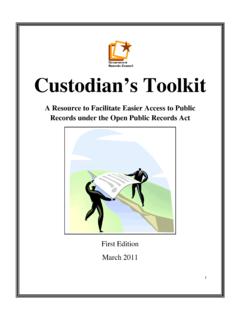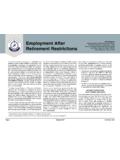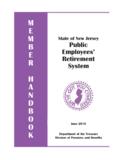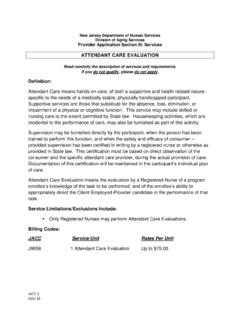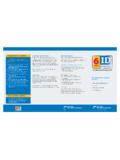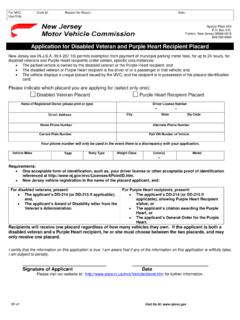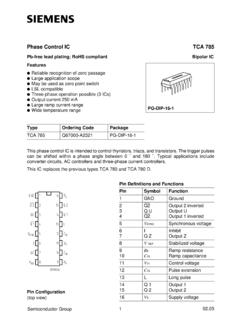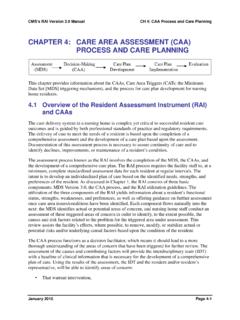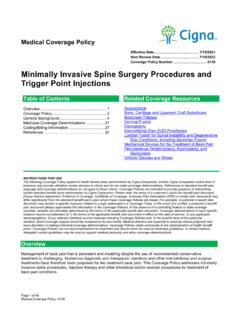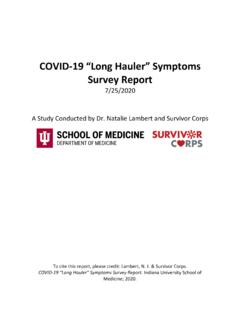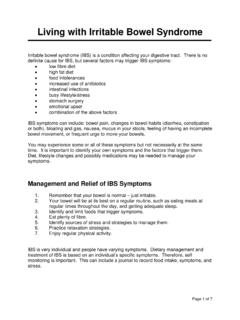Transcription of SIGNIFICANT CHANGES TO MINOR WORK AND ORDINARY …
1 1 SIGNIFICANT CHANGES TO MINOR WORK AND ORDINARY MAINTENANCE Pursuant to adoption in the March 5, 2018 New Jersey Register, the requirements for MINOR work and ORDINARY maintenance have changed. This document is meant to be an aid to local officials as an easy reference on the types of work that are ORDINARY maintenance and MINOR work beginning on March 5, 2018. The Document is divided into two parts. The first part lists the types of work that are ORDINARY maintenance, the second part lists types of work that are MINOR work.
2 The items that are new or different have been bolded so that the CHANGES may more easily be identified. ORDINARY MAINTENANCE The following items are types of work that may be performed without a permit pursuant to the Uniform Construction Code. The classification of work as ORDINARY maintenance is not a waiver from code compliance; all work is required to meet code requirements. However, no permit is required and there are no inspections of the work. The list has been arranged by the building type and discipline for ease of use.
3 For other than dwellings, the following has been designated as ORDINARY maintenance: BUILDING Finishes Painting (interior/exterior), wall papering, trim/molding (interior/exterior) and flooring material repair, replacement or installation. Siding For other than polypropylene siding, existing siding may be repaired or replacement with like material not exceeding 25 percent of the total building exterior wall. The installation of any amount of polypropylene siding requires a permit. Windows/Doors o Glass may be replaced in any window or door.
4 The replacement glass must be of a type and quality that complies with the code; o Windows and doors (including garage doors) may be replaced in the same rough opening without altering the dimensions or framing; this includes means of egress elements (such as emergency escape openings) when dimensions and framing are not altered, and the height, width or net clear opening is maintained. o Screens may be repaired, replaced or installed. Cabinets Non structural elements such as a cabinet may be repaired, replaced or installed.
5 Decks Any part of a deck, porch or stoop that does not provide structural support for any roof or portion of a building may be repaired or replaced. Insulation The installation of insulation when installed adjacent to or not more than one and a half inches from an interior finish, except that the installation of foam plastic insulation requires a permit (Note: ORDINARY maintenance used to be limited to roll or batt insulation, now any insulation other than foam plastic is allowed as ORDINARY maintenance). Gutters Exterior gutters and leaders may be repaired, replaced or installed.
6 Spas/Hot Tubs Storable spas and hot tubs may be installed when provided with a lockable safety cover that complies with ASTM F1346. 2 PLUMBING Fixtures and fixture parts Fixtures may be replaced with a similar fixture provided that there no change in the piping arrangement (Note: the replacement of fixtures was previously limited to single family dwellings, now fixtures may be replaced in all uses as ORDINARY maintenance); faucets and working parts of faucets may be replaced; existing fixtures may be refinished (relining fixtures is not ORDINARY maintenance).
7 Valves Hose bib valves may be replaced provided that an approved atmospheric vacuum breaker is provided (Note: the replacement of hose bibs used to be limited to single family dwellings, now they may be replaced in all uses as ORDINARY maintenance); valves and work parts of valves may be replaced including shower or combination bath/shower valves (Note: the replacement of shower valves used to be limited to single family dwellings now they may be replaced in all uses as ORDINARY maintenance). Ball Cocks Ball cocks may be replaced provided that an approved anti siphon type is used.
8 Piping repair/replacement Piping may be replaced to repair a leak (Note: the repair of leaks used to be limited to replacement of piping between any two adjacent joints, that is no longer the case). Appliance Replacements Domestic clothes washers and domestic dishwashers may be replaced. Traps Traps including traps on culinary sinks may be replaced. Drain cleaning Stoppages may be removed. ELECTRICAL Receptacles, switches and outlets Receptacles, switches, or lighting fixtures that do not contain emergency battery packs, may be replaced with a similar item.
9 However, receptacles in locations where ground fault circuit interrupter protection, damp/wet, or tamper resistant must comply with Section (D) of the electrical subcode (Note: The limitation on 20 amps or less has been removed). Equipment Repairing any installed electrically operated equipment such as doorbells, communication systems, and any motor operated device (In the event of a fire protection system being interrupted for repairs, the fire official is to be notified in accordance with the building subcode).
10 Communications Wiring Communications wiring may be installed ( Ch. 8 and data circuits between computers/information technology equipment from Article 725 of the electrical subcode) in a Class 3 structure (see 5:23 ), provided that the rearrangement does not involve penetration of a fire rated assembly and is not in a hazardous location (see Ch. 5 of the electrical subcode). Appliances Domestic dishwashers may be replaced. FIRE The replacement of sprinkler or smoke detector, smoke alarm, or heat detector heads with a like device.
